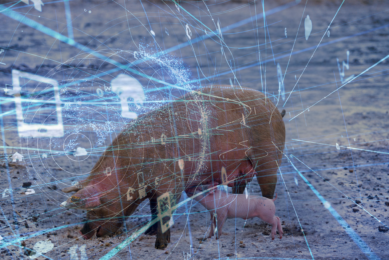Research: Phytase for stronger bones in pigs
Irish research investigated the effect of dietary phosphorus and calcium level and phytase addition on performance, bone parameters, apparent nutrient digestibility, mineral and nitrogen utilization of weaner pigs and the subsequent effect on finisher pig bone parameters.
Two experiments (Exp. 1 and Exp. 2), were conducted to investigate the effect of phosphorus (P) and phytase (PHY) addition on growth performance, coefficients of total tract apparent digestibility, and P, calcium (Ca) and nitrogen (N) utilization of weaner pigs from 11 to 30 kg body weight (BW) and the subsequent effect of early P and PHY nutrition in the finished pig (30–100 kg BW), when offered an adequate P and Ca diet.
Setup 1
In Exp. 1, six diets were fed to 96 weaner pigs (n = 8) to investigate the interaction of P and PHY on growth performance, bone parameters and faecal score.
The six diets included three dietary levels of P (4.5, 5.5 and 6.4 g total (t)P/kg) and two concentrations of PHY (0 and 500 PHY units/kg) in a 3 × 2 factorial arrangement.
Owing to the design of the experiment, as dietary P level increased, there was also an increase in dietary Ca level in order to maintain a dietary Ca to P ratio of 1.6:1.
Bone samples were collected from 48 pigs (eight pigs per treatment) at the end of the weaner performance study (30 kg BW).
The remaining 48 pigs were then offered a grower and finisher diet containing adequate P and Ca until they reached 100 kg BW.
Setup 2
In Exp. 2, the coefficients of total tract apparent digestibility and P, Ca and N utilization experiment, 24 male pigs (n = 4) were offered identical diets to that offered to weaner pigs in the performance study (Exp. 1).
Weaner pigs were placed individually in metabolism crates for total but separate urine and faeces collection.
Results
The weaner pigs fed the PHY supplemented diets had an improved feed conversion ratio compared with those fed diets without PHY.
Pigs offered the high P diet had a higher concentration of bone ash than those offered the medium and low P diets at 30 kg BW.
Pigs offered PHY diets and the medium and high P diets during the weaner stage had a higher bone ash concentration than pigs offered non-PHY diets and low P diets when slaughtered at 100 kg BW.
In Exp. 2, pigs offered PHY diets had a higher P digestibility and P retention than pigs offered non-PHY diets.
Conclusion
In conclusion there is no advantage to feeding market pigs during the weaner stage tP levels greater than 5.5 g/kg.
However, feeding levels of 6.4 g tP/kg during the weaner stage would be an advantage for swine producers aiming to maximise bone mineral concentrations at 100 kg BW.
References and further reading may be available for this article. To view references and further reading you must purchase this article.











